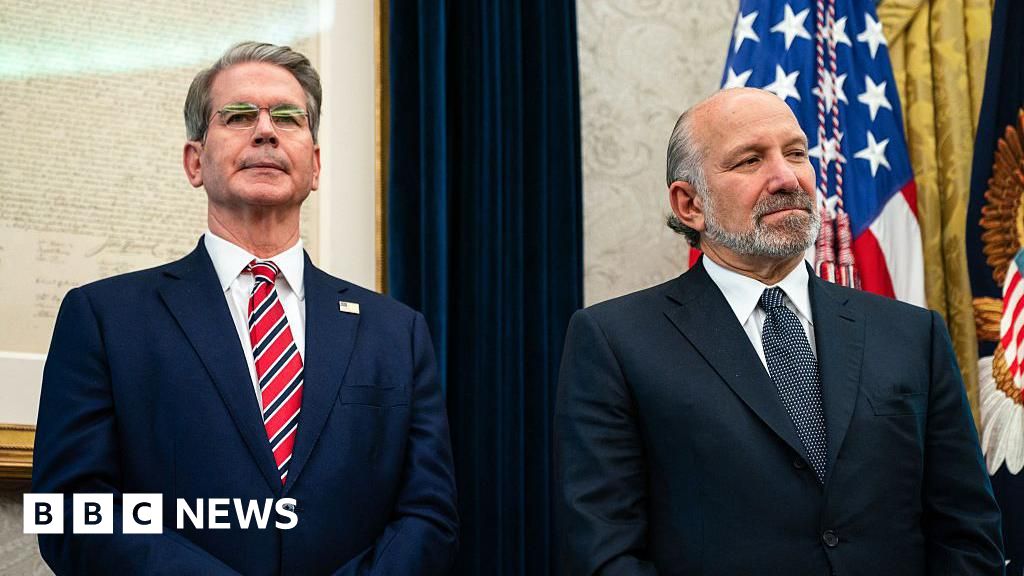- Business
El Esequibo, la oposición dividida y una escasa votación marcan elecciones regionales en Venezuela
时间:2010-12-5 17:23:32 作者:Columnists 来源:Strategy 查看: 评论:0内容摘要:óndivididayunaescasavotacióAn Associated Press analysis of anóndivididayunaescasavotacióAn Associated Press analysis of an
óndivididayunaescasavotacióThe first reports of near misses involving drones were logged in 2014, the AP found. The number of such encounters spiked the following year. Over the last decade, drones accounted for 51% — 122 of 240 — of reported near misses, according to AP’s analysis.óndivididayunaescasavotacióPassenger jets have long been subject to risks around airports — whether from bird strikes or congested airspace — as was made clear by the

óndivididayunaescasavotacióbetween a military helicopter and commercial jet near Washington, D.C., that killed 67 people.óndivididayunaescasavotacióThe threat from drones has become more acute in the last decade as the use of quadcopters and remote-controlled planes has exploded in popularity. Theóndivididayunaescasavotacióthat Americans are operating more than a million drones for recreational and commercial purposes.

óndivididayunaescasavotació“If you have the money, you can go on the internet and buy a pretty sophisticated drone that can reach altitudes they really have no business being at,” said William Waldock, a professor of safety science atóndivididayunaescasavotacióThe risk is most acute near airports because that is where the flight paths of drones and airplanes most overlap, experts said.

óndivididayunaescasavotacióThe incidents represent only a portion of such close calls because the
óndivididayunaescasavotació— NASA’s Aviation Safety Reporting System — relies on voluntary submissions from pilots and other aviation workers. A separate FAAóndivididayunaescasavotacióExperts said the FAA and other authorities could do more. They suggested creating a system similar to speed cameras on roadways that could capture a drone’s transponder code and send its pilots a ticket in the mail.
óndivididayunaescasavotacióThey also said the FAA should consider regulations that require all manufacturers to program a drone’s GPS unit to prevent it from flying near airports and other sensitive areas, a method called “geofencing.”óndivididayunaescasavotacióDJI, a leading drone maker, used such geofencing restrictions for years. However, it
óndivididayunaescasavotacióin January, replacing it with an alert to drone pilots when they approach restricted areas.óndivididayunaescasavotacióAdam Welsh, head of global policy at DJI, said managing requests from authorized users to temporarily disable the geofencing became an increasingly time-consuming task. More than one million such requests were processed last year.
- 最近更新
- 2025-07-07 03:43:38Four Palestinians killed in occupied West Bank by settlers, Israeli troops
- 2025-07-07 03:43:38Israeli attacks kill at least 78 as Trump signals progress in Gaza talks
- 2025-07-07 03:43:38A judge rules that Texas illegally placed people with disabilities in nursing homes
- 2025-07-07 03:43:38Israel kills more than 90 in Gaza as 3 killed in attack by Israeli settlers
- 2025-07-07 03:43:38Alex Isley: Tiny Desk Concert
- 2025-07-07 03:43:38Israeli attacks kill at least 78 as Trump signals progress in Gaza talks
- 2025-07-07 03:43:383 hours ago The David Lynch estate auction doubled as a caffeinated wake
- 2025-07-07 03:43:38Planning to be outside in the extreme heat? Take these precautions
- 热门排行
- 2025-07-07 03:43:38our guide to guest drivers and car insurance
- 2025-07-07 03:43:38At least three people dead from a tornado in North Dakota
- 2025-07-07 03:43:38Adding or removing drivers from your household changes
- 2025-07-07 03:43:38While the world watched Iran and Israel, what happened in Gaza?
- 2025-07-07 03:43:38Royal Caribbean's private island in the Bahamas
- 2025-07-07 03:43:38Israeli attacks kill at least 78 as Trump signals progress in Gaza talks
- 2025-07-07 03:43:38Bill Nighy, Mathew Horne, WWE’s Jordynne Grace Board Fantasy Film ‘Welcome to Paradis…
- 2025-07-07 03:43:38Keyboard shortcuts for audio player
- 友情链接
- Debt and trade issues weaken UK growth, OECD says China says US has 'severely violated' tariffs truce School's murals 'strengthen community connection' Burundi's ruling party seeks to tighten grip on power 'Hidden stories' of oldest town house to be told Judge halts deportation of Colorado suspect's family Are the surprise airfield attacks a turning point for Ukraine? Burundi's ruling party seeks to tighten grip on power 'Hidden stories' of oldest town house to be told Archaeologists seek volunteers to sort city history 'I got used to having Freddie Mercury next door' TikTok Shop food listings 'putting people at risk' Oreo maker sues Aldi in US over 'copycat' packaging TikTok Shop food listings 'putting people at risk' What Merz wants from Trump showdown meeting North Face and Cartier customer data stolen in cyber attacks Are the surprise airfield attacks a turning point for Ukraine? Gallery raising £3.8m for Hepworth 'masterpiece' Judge halts deportation of Colorado suspect's family School's murals 'strengthen community connection' Medicines watchdog to open 'digital hub' in city US vetoes UN call for unconditional Gaza ceasefire The British jet engine that failed in the 'Valley of Death' School's murals 'strengthen community connection' National Trust covers artwork referencing JK Rowling after tampering The British jet engine that failed in the 'Valley of Death' 'Hidden stories' of oldest town house to be told Disney makes hundreds more layoffs as it cuts costs Judge halts deportation of Colorado suspect's family What Merz wants from Trump showdown meeting
